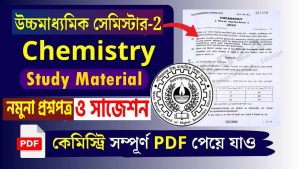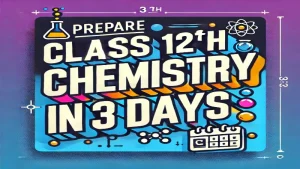NEET and AIPMT NEET Chemistry Chemical Kinetics MCQ questions with solutions. Get access to MCQs on Chemical Kinetics NEET Questions With Answers.
These questions are aligned with the NEET syllabus and help you better preparation. Free Question Bank for NEET Chemistry Chemical Kinetics / रासायनिक बलगतिकी. NEET Previous Year Question Paper Chemistry – Chapter-Wise Class 12 Chapter 4 Chemical Kinetics. That is why the NEET Question Papers are very prestigious. Chemical Kinetics NEET Chemistry MCQ. NEET Chemistry students should refer to the following multiple-choice questions with answers for Chemical Kinetics in NEET. Chemical Kinetics NEET Questions With Answers
Read More : Class 12 Chemistry Handwritten Notes Free Pdf Download
Class 12 Chapter 4 Chemical Kinetics NEET Questions with Answers
NEET 2020: The rate constant for a first order reaction is 4.606×10−3s−1. The time required to reduce 2.0g of the reactant to 0.2g is :
- a) 200 s
- b) 500 s
- c) 1000 s
- d) 100 s
Answer:
NEET 2020: An increase in the concentration of the reactants of a reaction leads to change in:
(1) heat of reaction
(2) threshold energy
(3) collision frequency
(4) activation energy
Answer: Collision frequency ∝ number of reactant molecules per unit volume
As the concentration of reactants of a reaction increase the number of reactant molecules per unit volume increase which increases the collision frequency
NEET 2020: The half-life for a zero order reaction having 0.02 M initial concentration of reactant is 100 s. The rate constant (in mol L-1 s-1) for the reaction is
(1) 1.0×10−4
(2) 2.0×10−4
(3) 2.0×10−3
(4) 1.0×10−2
Answer: For zero order reaction
t½=a/2k
⟹k= a/2t½
k= 0.02/2×100=1.0×10−4 molL−1s−1
NEET 2020: In collision theory of chemical reaction, ZAB represents
(1) the fraction of molecules with energies greater than Ea
(2) the collision frequency of reactants, A and B
(3) steric factor
(4) the fraction of molecules with energies equal to Ea
Answer: (2) the collision frequency of reactants, A and B
Sol. The number of collisions per second per unit volume of the reaction mixture (A and B) is known as collision frequency ZAB.
NEET 2019: If the rate constant for a first order reaction is k, the time (t) required for the completion of 99% of the reaction is given by:
- t=2.303/k
- t=0.693/k
- t=6.909/k
- t=4.606/k
Answer: Solution: Correct option is D
t=4.606/k
First order rate constant is given as ,
t= (2.303/k)log(a/a-x)
For 99% completed reaction,
t= (2.303/k)log(100/100-99)
t= (2.303/k)log(100)
t= (2.303/k)log102
t= (2.303/k)x2
t=4.606/k
NEET 2019: For the chemical reaction N2(g)+3H2(g) ⇌ 2NH3(g) the correct option is:
Answer: Solutions 4
NEET 2019: A first order reaction has a rate constant of 2.303×10−3 s−1. The time required for 40 g of this reactant to reduce to 10 g will be [Given that log2= 0.3010] NCERT Problem
(1) 230.3 s
(2) 301 s
(3) 2000 s
(4) 602 s
Answer: Solution: Correct option is D
t=602 s
First order rate constant is given as ,
t= (2.303/k)log(a/a-x)
For 40 g of this reactant to reduce to 10 g ,
t= (2.303/k)log(40/10)
t= (2.303/2.303×10-3)log(4)
t= (103)log22
t= (103)x2 log2 = (103)x2 x 0.3010
t=602.0
NEET 2019: For a reaction, activation energy Ea=0 and the rate constant at 200 K is 1.6 X 106s−1. The rate constant at 400K will be [Given that gas constant, R=8.314 J K−1 mol−1] NCERT Problem
(1) 3.2 x 104 s−1
(2) 1.6 x 106 s−1
(3) 1.6 x 103 s−1
(4) 3.2 x 106 s−1
Answer: Solution: (2) 1.6 x 106 s−1
log(K2/K1)=(E/2.303R)(T2−T1/T1T2)
Ea=0
log(K2/K1)=0
K2/K1=100 =1
⇒ K2=K1
K2= 1.6 x 106 s−1
at 400K
NEET 2018: The correct difference between first- and second-order reactions is that NCERT Problem
- the rate of a first-order reaction does not depend on reactant concentration; the rate of a second-order reaction does depend on reactant concentrations.
- the half-life of a first-order reaction does not depend on [A]o ; the half-life of a second-order reaction does depend on [A]0
- a first-order reaction can be catalyzed; a second-order reaction cannot be catalyzed.
- the rate of a first-order reaction does depend on reactant concentrations; the rate of a second-order reaction does not depend on reactant concentrations
Answer: Solutions- Correct option is – (2) The half-life of a first-order reaction does not depend on [A]o ; the half-life of a second-order reaction does depend on [A]0
For first order reaction, t½= 0.693/k
For second order reaction, t½=1/k[A]0
NEET 2018: When the initial concentration of the reactant is doubled, the half-life period of a zero order reaction NCERT Problem
- is halved
- is doubled
- is tripled
- remains unchanged
Answer: Solutions- Correct option is – (2) For zero order reaction, t½= [A]0/2k
NEET 2017: Mechanism of a hypothetical reaction
X2 + Y2 ——-> 2XY
is given below
(A) X2 ⇌ X + X (fast)
(B) X + Y2 —–→ XY + Y (slowest)
(C) X + Y —-−→XY (fast)
The overall order of the reaction will be
- 1
- 2
- 0
- 1.5
Answer: Solutions- Correct option is – (4) For complex reaction,
NEET 2017: A first order reaction has a specific reaction rate of 10-2s-1. How much time will it take for 20 g of the reactant to reduce to 5 g? NCERT Problem
(a) 238.6 s
(b) 138.6 s
(c) 346.5 s
(d) 693.0 s
Answer: Solutions- Correct option is – (2) For fast order reaction,
t= (2.303/k)log(a/a-x)
t= (2.303/10-2)log(20/5)
t= (2.303/10-2)log(4)
t= (2.303/10-2)log(22)
t= (2.303×102)x2xlog(2)
t= (2.303×102)x2x0.3010
t= 138.6 s
NEET 2017: The equilibrium constant of the following are: The equilibrium constants of the following are:
N2+3H2 ⇌ 2NH3; K1
N2+O2 ⇌ 2NO; K2
H2+ ½ O2 → H2O; K3
The equilibrium constant (K) of the reaction:
2NH3+5/2 O2 ⇌ 2NO+3H2O ; K will be:
- K2K3/K1
- K2K33/K1
- K23K3/K1
- K1K33/K2
Answer: Solutions- Correct option is – (2)
NEET 2017: Which one of the following statements is not correct?
- The value of equilibrium constant is changed in the presence of a catalyst in the reaction at equilibrium.
- Enzymes catalyse mainly bio-chemical reactions
- Coenzymes increase the catalytic activity of enzyme
- Catalyst does not initiate any reaction
Answer: Solutions- Correct option is – (1) The value of equilibrium constant is changed in the presence of a catalyst in the reaction at equilibrium
NEET 2016: The decomposition of phosphine (PH3) on tungsten at low pressure is a first-order reaction. It is because the
(1) rate is proportional to the surface coverage
(2) rate is inversely proportional to the surface coverage
(3) rate is independent of the surface coverage
(4) rate of decomposition is very slow
Answer: Solutions- Correct option is (1) rate is proportional to the surface coverage
In case of gases (like PH3) pressure of gas on metal/catalyst surface acts as activity/concentration hence the rate of reaction depends upon the pressure of gas. Rate=k[PPH3]
According to Freundlich adsorption isotherm:
x/m=kP1/n
Here x/m is mass of gas absorbed per unit mass of metal/catalyst. At low pressures n = 1 and it keeps increasing on increasing the pressure. Additional Information: As the pressure increases or at high pressure the surface of metal/catalyst becomes saturated and thus pressure no longer affects the rate of reaction.
NEET 2016: The rate of a first-order reaction is 0.04 mol L-1 s-1 at 10 sec and 0.03 mol L-1 s-1 at 20 sec after initiation of the reaction. The half-life period of the reaction is
- 34.1 s
- 44.1 s
- 54.1 s
- 24.1 s
Answer: Solutions- Correct option is (B) 24.1 sec
The rate law expression for the first order reaction is =k×[A].
Substitute values in the above expression.
0.04=K[A]10……(1)
0.03=K[A]20……(2)
Divide equation (1) by equation (2).
[A]10/[A]20= 0.04/0.03= 4/3
At 10 sec, the expression for the rate constant will be t=(2.303/k)log[A]10/[A]20.
10=(2.303/k)log(4/3)
Hence, the rate constant k=(2.303/10)log(4/3)=0.0288min−1
The half life period is t ½ =0.693/k= 0.693/0.0288= 24.06min−1

NEET 2015: The activation energy of a reaction can be determined from the slope of which of the following graphs?
- ln K vs T
- ln K/T vs T
- ln K vs 1/T
- T/lnK vs 1/T
Answer: Solutions- Correct option is (3) ln K vs 1/T
The Arrhenius equation is lnk= lnA− Ea/RT.
Thus, the activation energy of a reaction can be determined from the slope of which of the graph ln K vs. 1/T.
Slope= −Ea/R
Hence, Ea= −slope×R
NEET 2015: Find the order of the reaction if the half-life is independent of its initial concentration.
- Zero
- First
- Second
- More than zero but less than first
Answer: Solutions- Correct option is – (2) The half-life of a first-order reaction does not depend on [A]o
For first order reaction, t½= 0.693/k
NEET 2015: The rate constant of the reaction A → B is 0.6 x 10-3 molar per second. If the
concentration of A is 5 M then concentration of B after 20 min is
- 1.08 M
- 3.60 M
- 0.36 M
- 0.72 M
Answer: Solutions- Correct option is (4): The rate constant has unit mole per second which indicates zero order reaction.
x = kt
The concentration of B after 20 minutes is 20×60×0.6×10−3 = 0.72M
NEET 2013: What is the activation energy for a reaction if its rate doubles when the temperature is raised from 20°C to 35°C? (R= 8.314 J mol-1 K-1)
- 342 kJ mol-1
- 269 kJ mol-1
- 34.7 kJ mol-1
- 15.1 kJ mol-1
Answer: Solutions- Correct option is (3): 34.7 kJ mol-1
Given, initial temperature,
T1 = 20+273= 293 K
Final temperature
T2 = 35+273 = 308 K
R: 8.314 J mol-1 K-1
Since, rate becomes double on raising temperature,
therefore,
r2 =2r1 or r2/r1 = 2
As rate constant, k a r
From Arrhenius equation, we know that

Ea= 34.7 kJ mol−1
first order reaction
rate of reaction
zero order reaction
chemical kinetics class 12
kinetics
second order reaction
first order kinetics
chemical kinetics notes
define order of reaction
international journal of chemical studies
zero order kinetics
chemical kinetics class 12 notes
unit of rate constant
rate branch system
molecularity of reaction
half life of first order reaction
rate of chemical reaction
chemical kinetics pdf
1st order reaction
rate law expression
molecularity of a reaction
extent of reaction
chemical kinetics formula
difference between molecularity and order of reaction
first order reaction formula
first order reaction equation
chemistry kise kahate hain
rate constant for first order reaction
unit of zero order reaction
units of rate constant
example of zero order reaction
history of chemistry
half life of zero order reaction
unit of rate constant for first order reaction
rate of reaction formula
complex reaction
reaction kinetics
average rate of reaction
rate constant for second order reaction
molecularity and order of reaction
chemical kinetics class 12 notes pdf
2nd order reaction
what is chemical kinetics
kinetic hobbies
chemical kinetics ncert class 12
define reaction
order of reaction is
collision theory of reaction rates
father of physical chemistry







